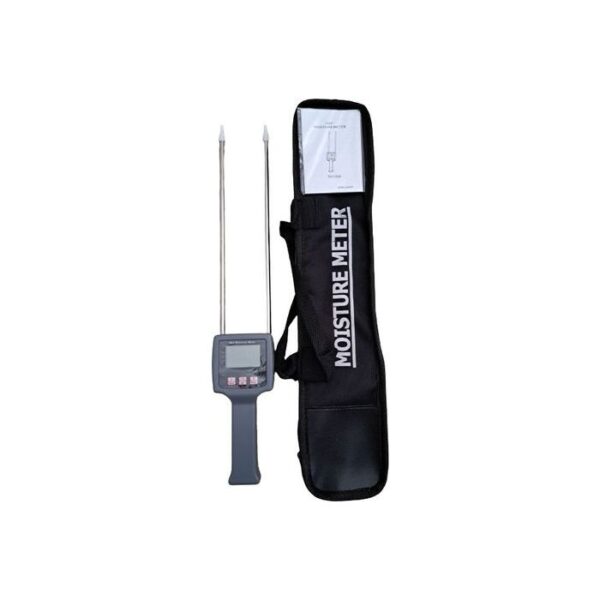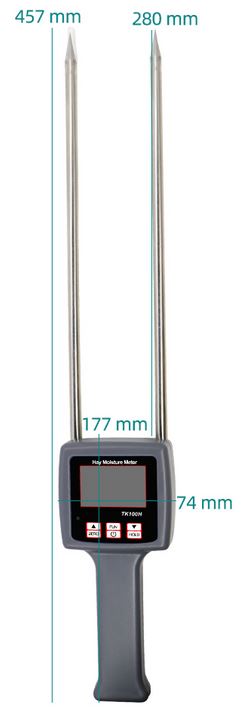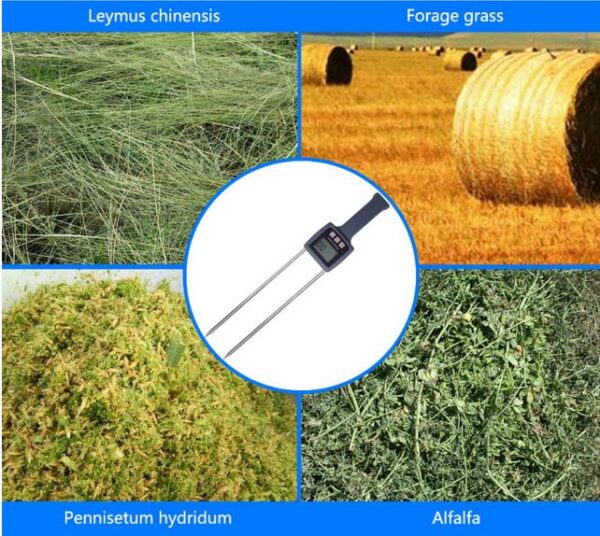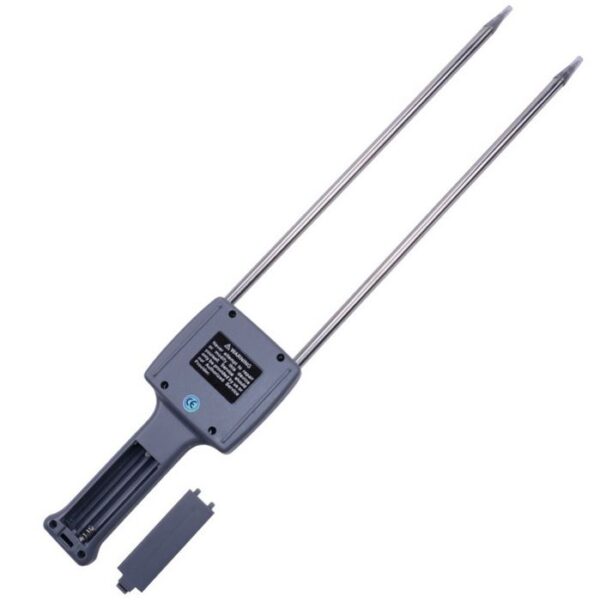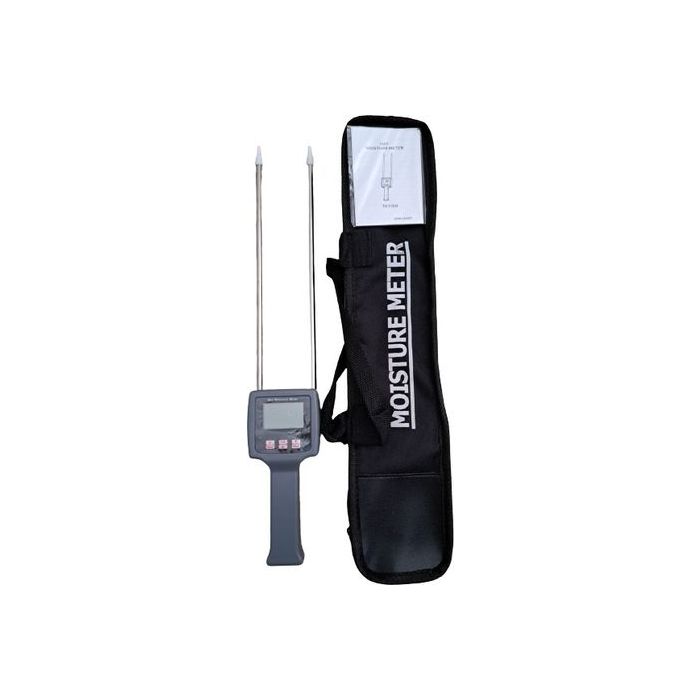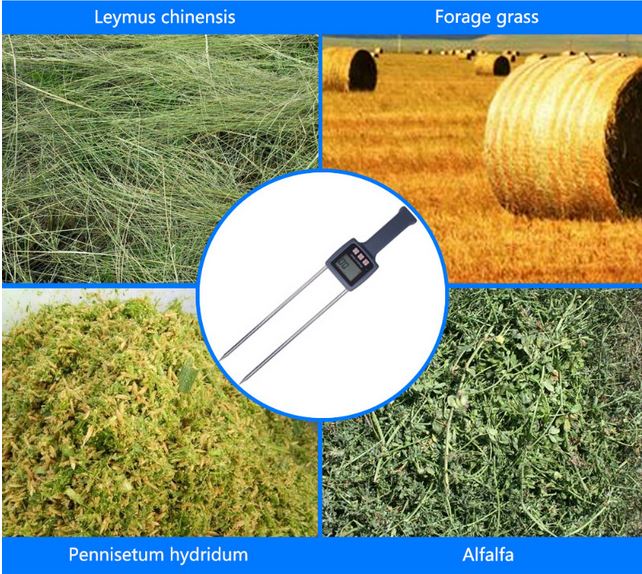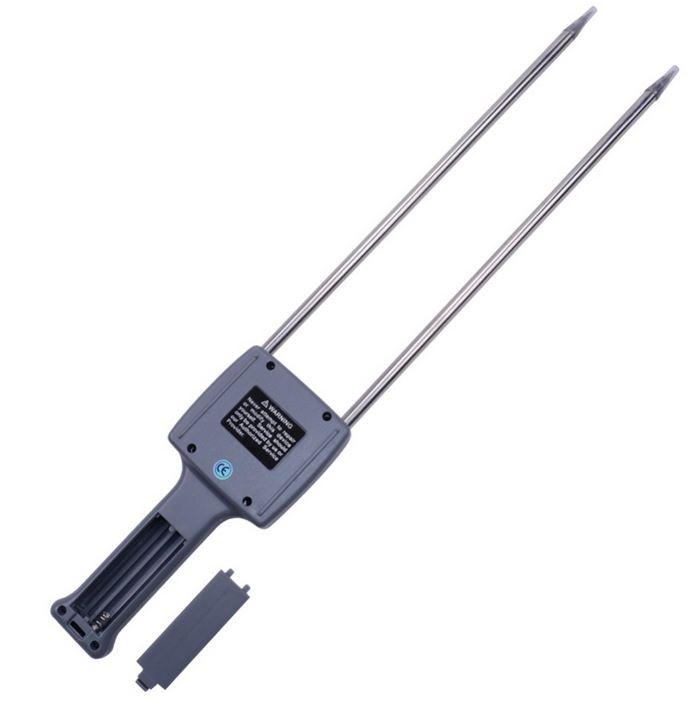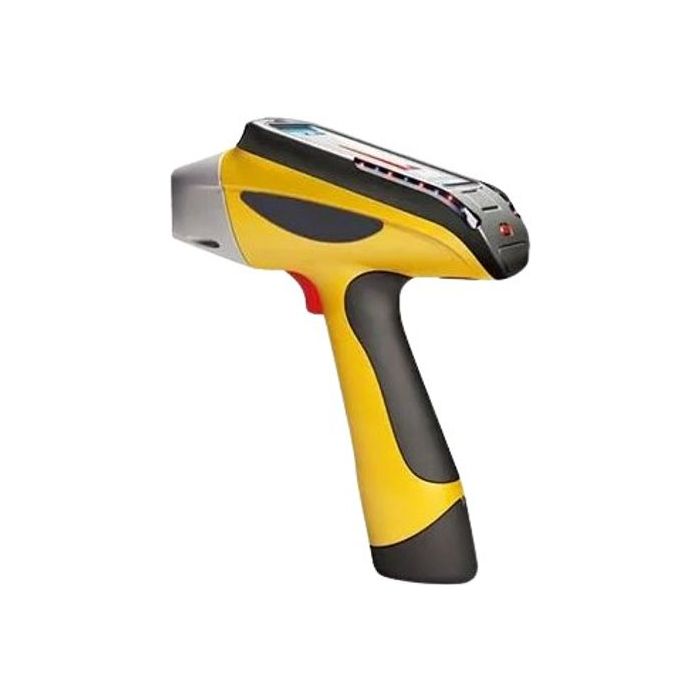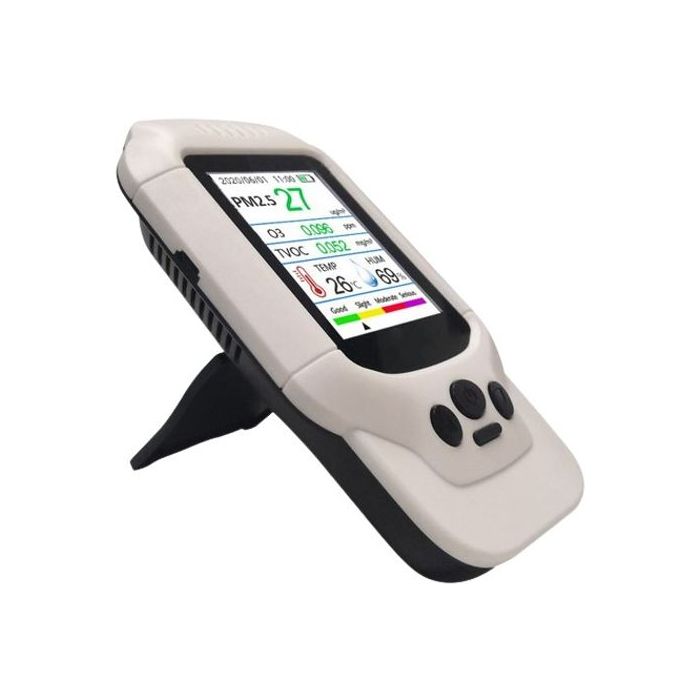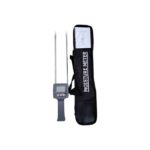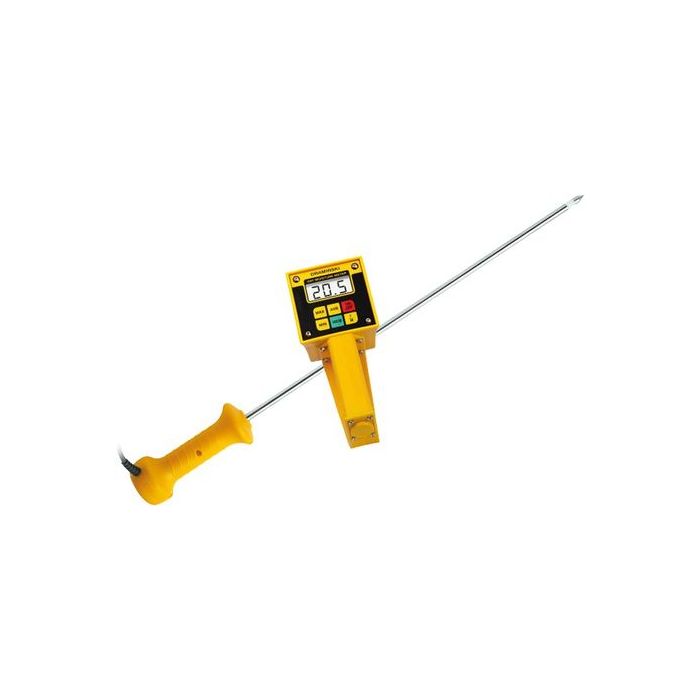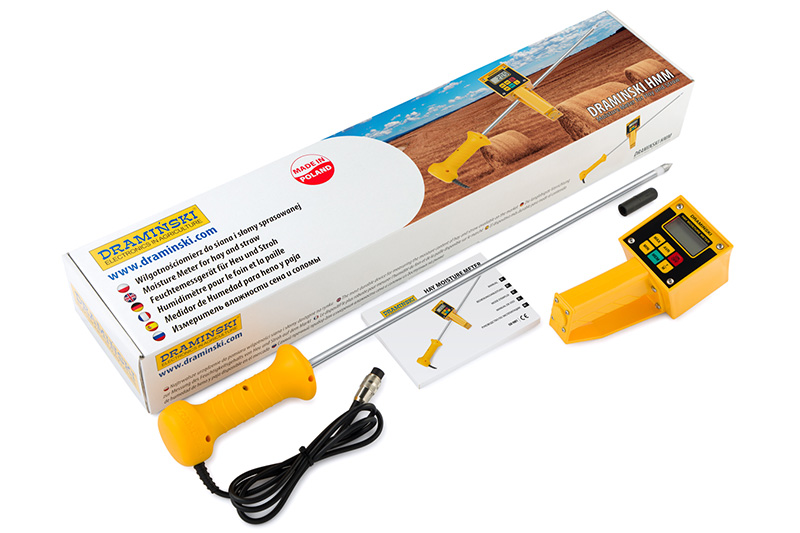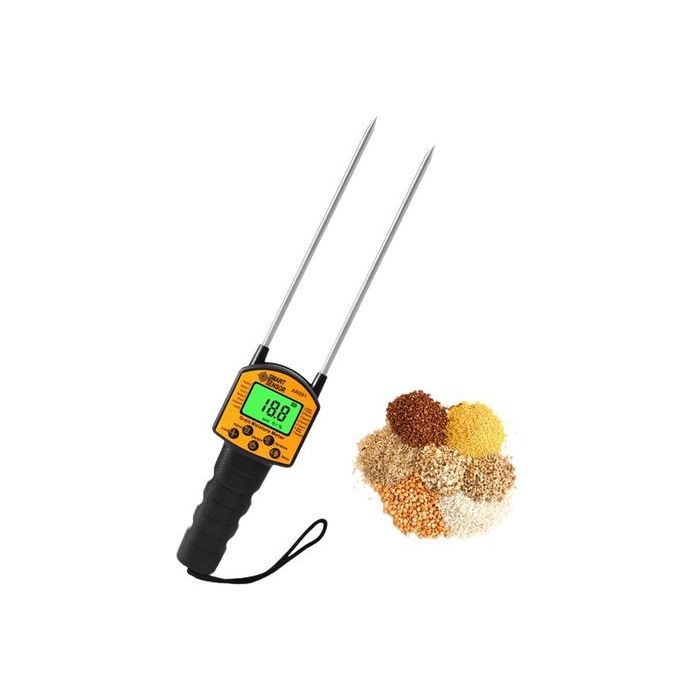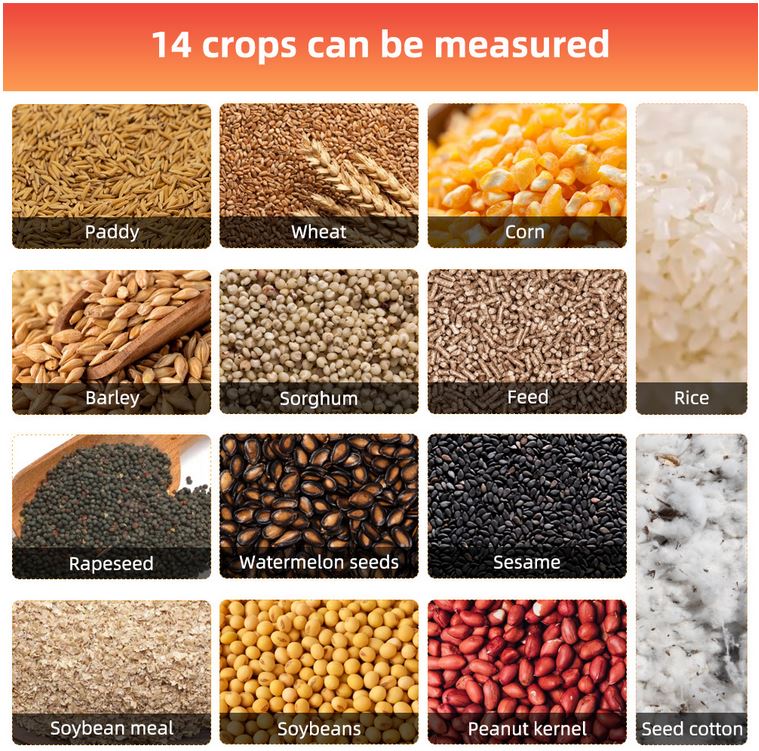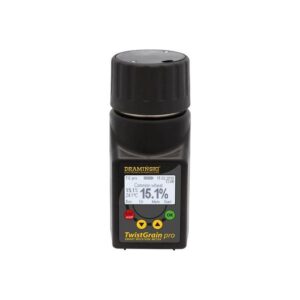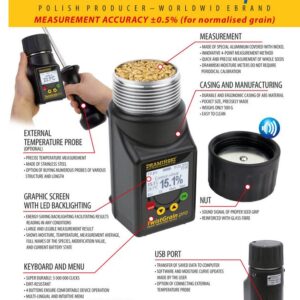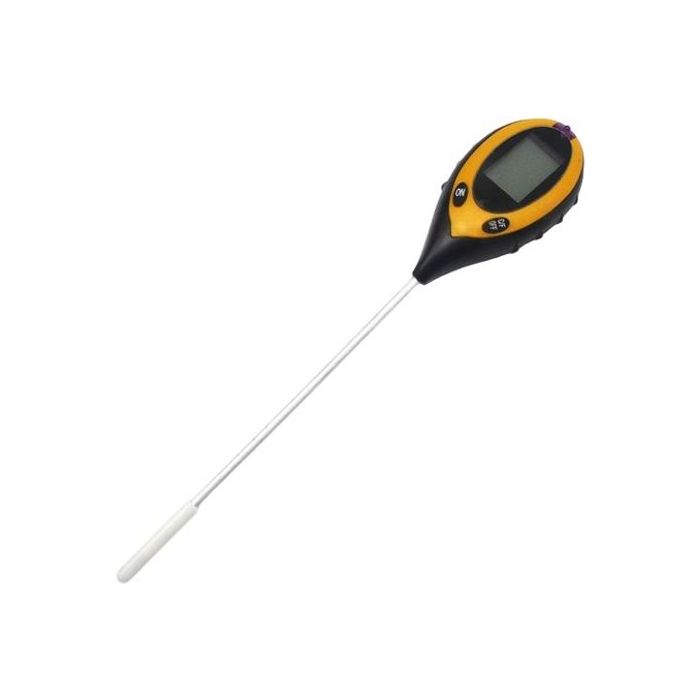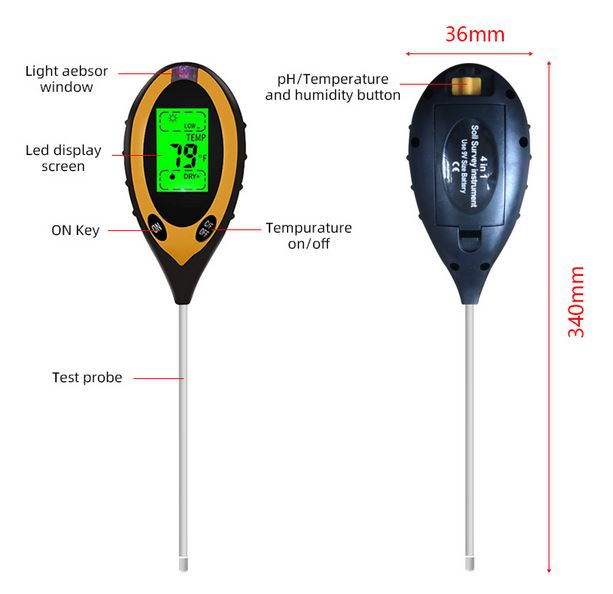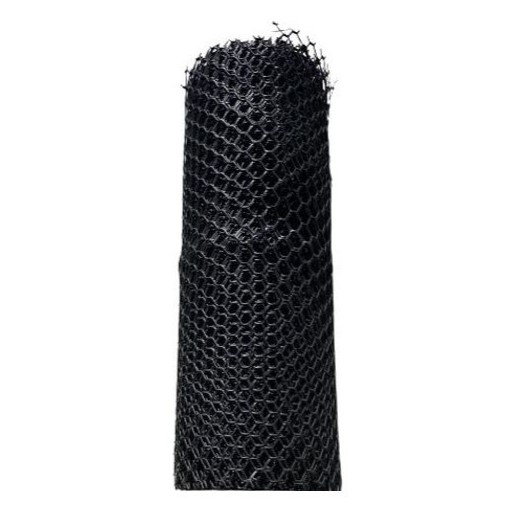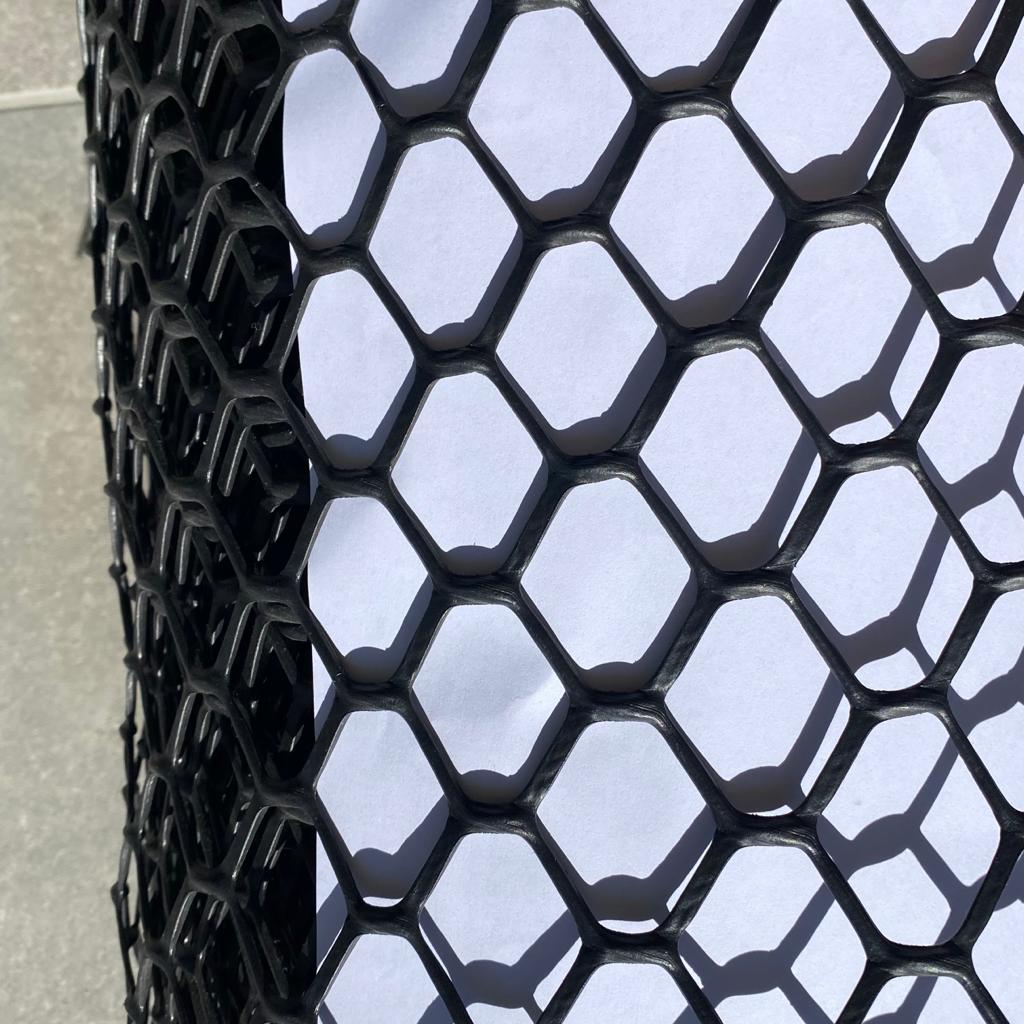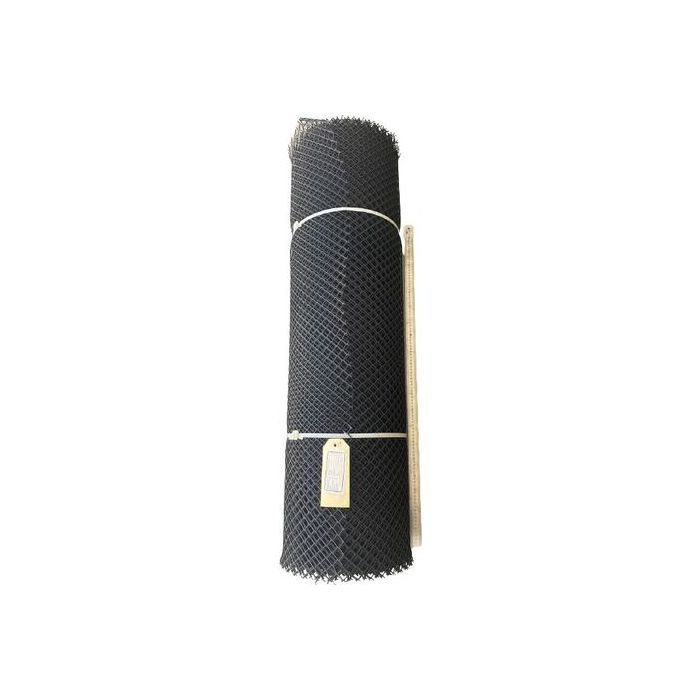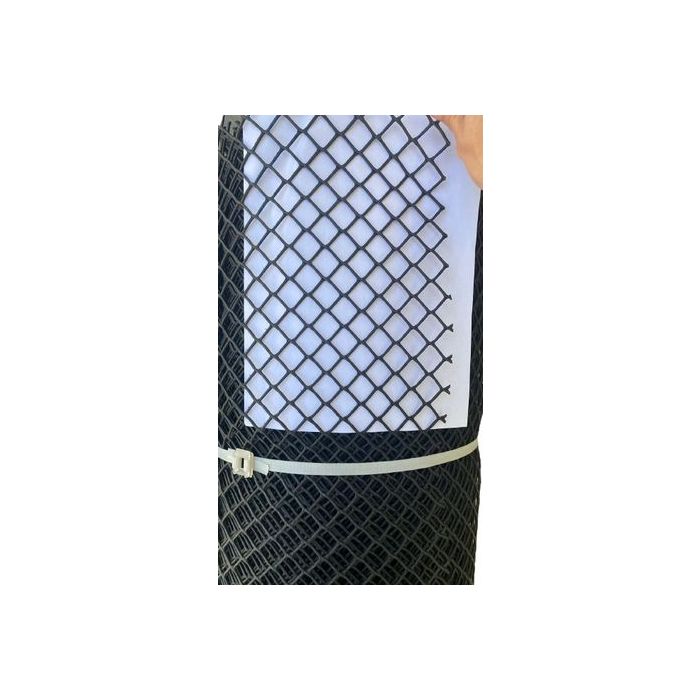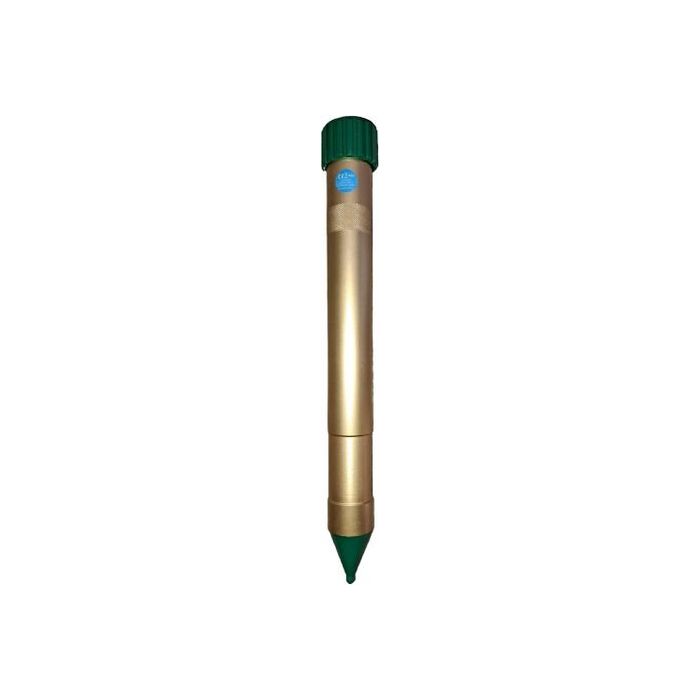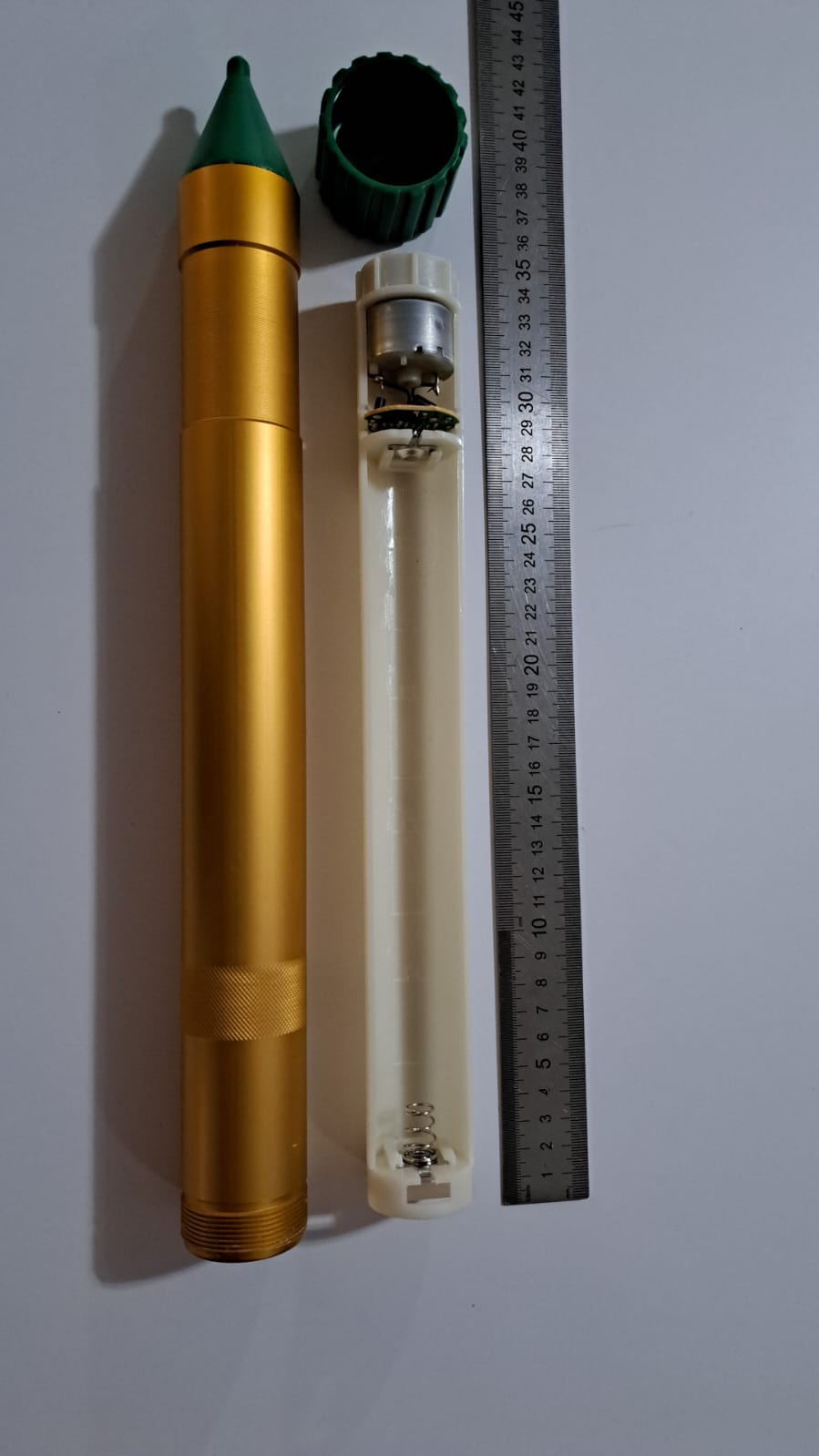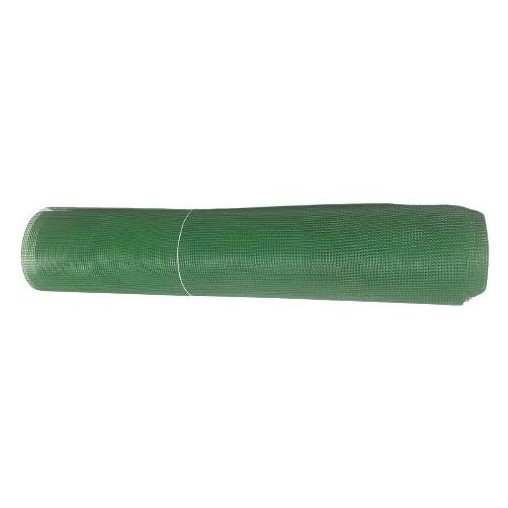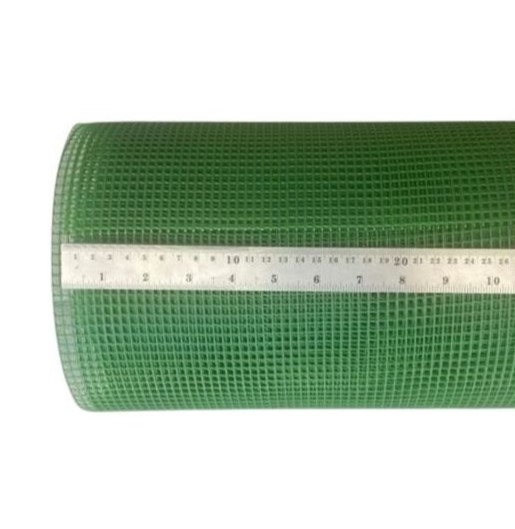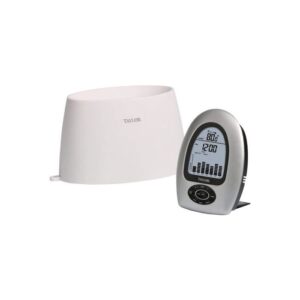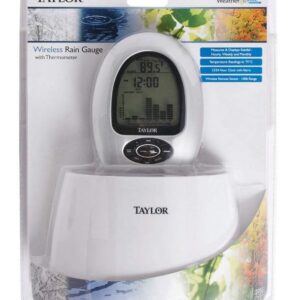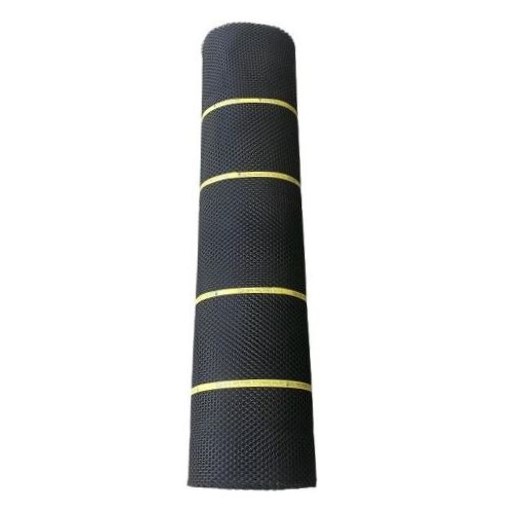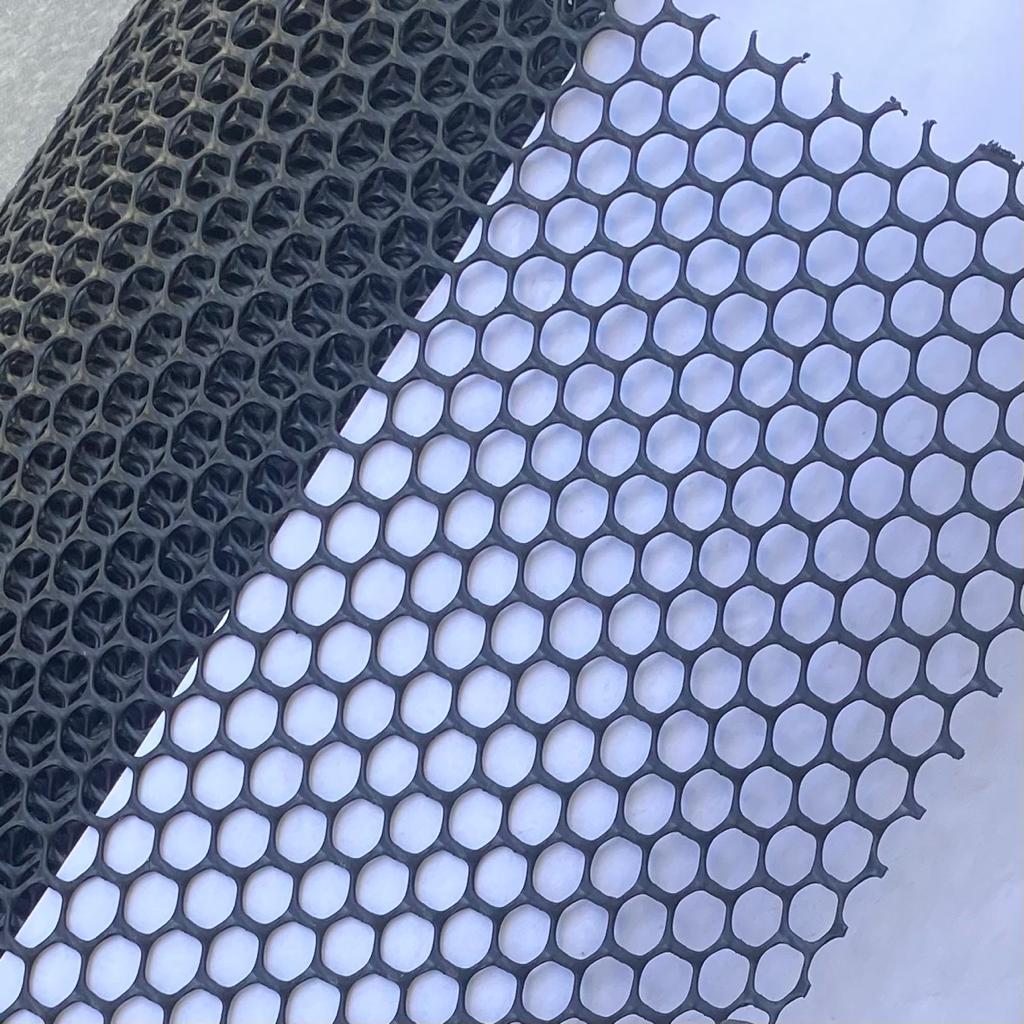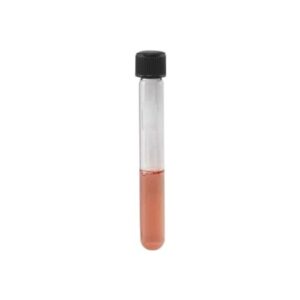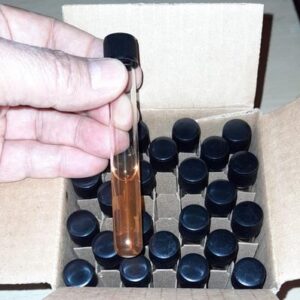Hay bale moisture meter
R2,660.00 Excl. VAT
Hay and straw bale moisture meter.
- Description
- Additional information
- Moisture content
- Product Manuel and References
Description
Hay bale moisture meter
TK100H Portable hay moisture meter for cereals, straw, bran, forage grass, Leymus chinensis, Emperor bamboo grass, Solanum nigrum, sisal, Lysimachia, silkworm chrysalis, Banlangen, Cole, Apocynum, wheat, Alfalfa, Oldenlandia diffusa, potato and similar fibres, products and materials.
Specifications
- Display: 4 digital LCD
- Measuring range: 0-80%
- Temperature: 0-60C
- Humidity: 5%-90%
- Resolusion:0.1
- Accuracy: ± 0.5%n
- Operation: Electrical Resistance Method, Automatic temperature Compensation
- Power supply: 4×1.5 AAA size (UM-4) battery(not including batteries)
Additional information
| Weight | 2 kg |
|---|---|
| Dimensions | 50 × 20 × 10 cm |
Moisture content of stored bales
Horse feed
Under normal conditions, hay is cut, crimped, raked and/or turned to reduce drying time, and then baled. The moisture content of standing hay varies from 65-85%. Hay destined for small square bales needs to be dried below 15% (85% dry matter) before baling for horses, to reduce the chance of dust. The majority of hay is air dried in the field over a 3 to 5-day period. Some producers build hay dryers to enable them to bale hay at moisture contents up to 30%. These dryers mechanically draw dry and often heated air through the bales reducing their moisture level. Square bales will normally lose moisture during storage, resulting in a final dry matter content of about 89% or 11% moisture.
Horse quality hay should be baled between 10 and 15 percent moisture.
- Hay baled at over 17 percent moisture is at risk of molding.
- Hay baled over 25 percent is at risk of severe heat damage and serves as a potential fire hazard.
Hay and straw
Hay and straw bales are commonly used for animal feed and bedding, and proper storage is essential to maintain their quality. The different types of hay and straw bale are as follows:
- Timothy Hay: Timothy hay is a common type of grass hay that is high in fiber and low in protein. It is often used for horse feed and can be stored at a moisture content of 12% to 15%.
- Alfalfa Hay: Alfalfa hay is a legume hay that is high in protein and calcium. It is commonly used for dairy and beef cattle feed and can be stored at a moisture content of 10% to 13%.
- Wheat Straw: Wheat straw is a byproduct of wheat production and is low in protein and energy. It is commonly used for animal bedding and can be stored at a moisture content of 10% to 15%.
- Oat Straw: Oat straw is a byproduct of oat production and is low in protein and energy. It is commonly used for animal bedding and can be stored at a moisture content of 10% to 15%.
The best storage moisture content for hay and straw bales is typically between 10% and 15%. Bales that are too wet can develop mold, while bales that are too dry can become brittle and lose their nutritional value. It is important to store hay and straw bales in a dry, well-ventilated area to prevent moisture buildup and ensure quality preservation.
Other dried herbaceous materials
The ideal moisture content for bales can vary depending on the specific material and its intended use. Here are some general guidelines for the materials you mentioned:
- Leymus chinensis: Leymus chinensis, also known as Chinese wildrye, is a type of grass commonly used for forage and erosion control. The ideal moisture content for Leymus chinensis bales is typically between 10% and 15%.
- Emperor bamboo grass: Emperor bamboo grass is a type of bamboo commonly used for ornamental and landscaping purposes. The ideal moisture content for Emperor bamboo grass bales is typically between 12% and 15%.
- Solanum nigrum: Solanum nigrum, also known as black nightshade, is a herbaceous plant that is sometimes used as a medicinal herb. The ideal moisture content for Solanum nigrum bales is typically between 10% and 12%.
- Sisal: Sisal is a type of agave plant that is commonly used for fiber production. The ideal moisture content for sisal bales is typically between 10% and 12%.
- Lysimachia: Lysimachia is a type of flowering plant that is sometimes used for medicinal purposes. The ideal moisture content for Lysimachia bales is typically between 10% and 12%.
- Silkworm chrysalis: Silkworm chrysalis is the pupal stage of the silkworm, which is used in the production of silk. The ideal moisture content for silkworm chrysalis bales is typically between 10% and 12%.
- Banlangen: Banlangen, also known as radix isatidis, is a type of flowering plant that is sometimes used in traditional Chinese medicine. The ideal moisture content for Banlangen bales is typically between 10% and 12%.
- Cole: Cole is a type of cabbage that is sometimes used as a medicinal herb. The ideal moisture content for cole bales is typically between 10% and 12%.
- Apocynum: Apocynum is a type of flowering plant that is sometimes used for medicinal purposes. The ideal moisture content for Apocynum bales is typically between 10% and 12%.
- Oldenlandia diffusa: Oldenlandia diffusa, also known as snake-needle grass, is a type of herbaceous plant that is sometimes used in traditional Chinese medicine. The ideal moisture content for Oldenlandia diffusa bales is typically between 10% and 12%.
Click here to view manual
References
Hay, haylage and treated hay for horses
https://www.ontario.ca/page/hay-haylage-and-treated-hay-horses
Selecting and storing hay
https://extension.umn.edu/horse-nutrition/selecting-and-storing-horse-hay#moisture-content-2330713
Fibrous bagasse
https://www.moisttech.com/applications/bioenergy-moisture/bagasse-moisture/


